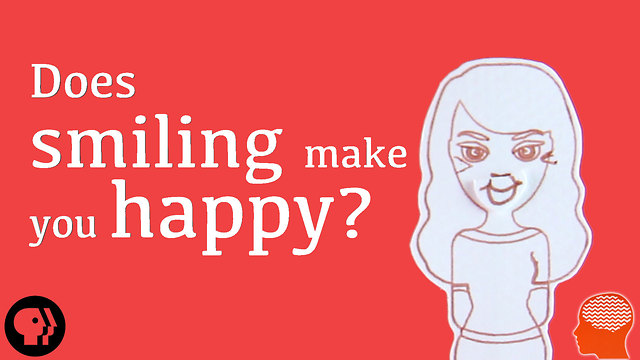Premium Only Content

Forcing Yourself To Smile Can Probably Make You Happier
They say people can always tell if you are faking a smile because your eyes are not mirroring your mouth. In reality, when you are tired or stressed, a fake facade is sometimes the only thing you can muster. But according to this explanation, even a fake smile can sometimes be better than none at all.
In the mid 19th century, a French scientist by the name of Guillaume Duchenne studied emotional responses in humans by stimulating different areas on his subject’s faces with - you guessed it - good old electricity. This helped him isolate the muscles that we use to express fear, sadness and joy. But it also helped him distinguish which muscles on our faces create a fake smile, and which create a genuine smile.
There are two muscles: one just under our eyes called orbicularis oculi, and another on the sides of our cheeks called zygomaticus major, that work together to give our expressions that real smile. It is also called a Duchenne smile.
Charles Darwin was inspired by Duchenne and conducted his own research. In it, he suggests that our facial expressions actively influence our mood, calling it the facial feedback hypothesis. In a more recent study, subjects were given Botox shots for the corrugator muscles in their brows so they could not express sad or distressed emotions on their face. They reported that their positive mood was higher than the other participant who received different medications.
The conclusion is pretty simple, although a bit controversial. If you bear through your periods of sadness and stress with a fake smile, the happiness you present will eventually catch up with you. You can always watch this dog smiling on cue, it always works for us.
-
 3:02
3:02
PBS_Braincraft
7 years agoS4 Ep6: The Neuroscience of Creativity
634K -
 5:48
5:48
KTNV
5 years agoA Whiter Smile is a Happier Smile
32 -
 0:21
0:21
j1j2
5 years ago $0.36 earnedSome people can make you smile
475 -
 0:40
0:40
Funwith5
5 years ago $0.16 earnedThis will make you Smile
3713 -
 15:18
15:18
theBElife
4 years ago $0.01 earnedMake Someone Smile
84 -
 0:17
0:17
TheCaveMan
5 years agoLet’s make a smile
59 -
 6:09
6:09
KTNV
5 years agoAffordable Dentistry That'll Make You Smile
9 -
 0:12
0:12
ShellyNewby
5 years agoRaspberries that Make U Smile
69 -
 0:33
0:33
DailyVoice
5 years ago $0.03 earnedMake yourself at homo
43.3K -
 0:40
0:40
WGBA
5 years agoA cream puff will make you smile
37